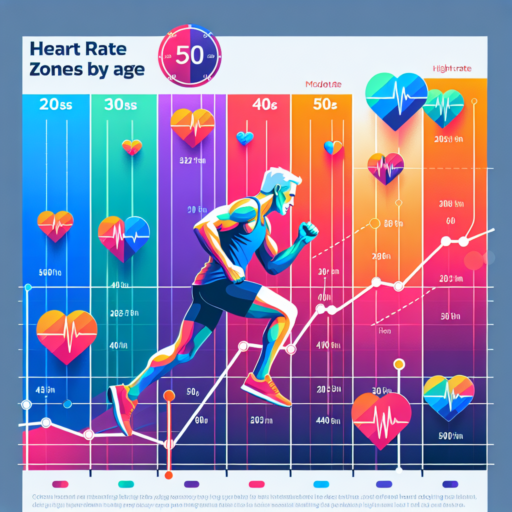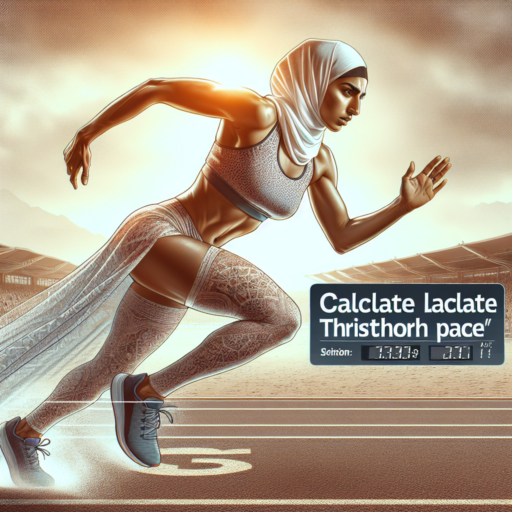What heart rate zone should I be in for interval training?
When engaging in interval training, targeting the correct heart rate zone can optimize your workout efficiency and maximize benefits. Interval training, a form of cardiovascular exercise that alternates short periods of intense anaerobic exercise with less-intense recovery periods, necessitates fluctuating heart rate zones to achieve its effectiveness. Understanding and aiming for the right zone during your workouts is crucial for enhancing fitness levels, fat burning, and improving cardiovascular health.
Understanding Heart Rate Zones for Interval Training
To determine the ideal heart rate zone for interval training, it is first essential to understand the different heart rate zones. These zones range from very light activity levels at Zone 1 to maximum effort levels at Zone 5:
- Zone 1 (50-60% of maximum heart rate) – Very light intensity, used primarily for warm-ups and cool-downs.
- Zone 2 (60-70% of maximum heart rate) – Light intensity, ideal for endurance and longer training sessions.
- Zone 3 (70-80% of maximum heart rate) – Moderate intensity, where most of the interval training recovery periods will occur.
- Zone 4 (80-90% of maximum heart rate) – High intensity, perfect for short bursts of effort in interval training.
- Zone 5 (90-100% of maximum heart rate) – Maximum effort, used sparingly for very short and intense bursts within interval workouts.
For effective interval training, oscillating between Zone 4 for your high-intensity intervals and Zone 2 or 3 for your recovery periods is recommended. This strategy helps in pushing the body to adapt to different intensions, boosting the aerobic and anaerobic systems, and improving overall fitness.
Calculating Your Target Heart Rate for Interval Training
Calculating your maximum heart rate (MHR) is a starting point to identifying your target zones for interval training. The general formula for this calculation is 220 minus your age. Once you have your MHR, you can determine the percentages for each zone. For instance, if you are 30 years old, your MHR would be 190 beats per minute (220-30=190). From here, aiming for 152-171 BPM (80-90% of MHR) for high-intensity intervals, and 114-133 BPM (60-70% of MHR) for recovery periods, can guide your efforts effectively.
Emphasizing the transition between these zones during interval training sessions is key. It allows the body to experience the benefits of both aerobic and anaerobic exercise, leading to improved cardiovascular fitness, increased fat burning, and enhanced endurance. By understanding and applying these principles to your training regimen, you can optimize your performance and achieve your fitness goals more efficiently.
No se han encontrado productos.
How much should you train in each heart rate zone?
Understanding how much to train in each heart rate zone is pivotal for optimizing your workout efficiency and achieving your fitness goals. Each zone represents a different intensity level and benefits your body in various ways. Recognizing the balance and time required in each can enhance both performance and recovery.
Zone 1: Light Intensity
Training in Zone 1, or the light intensity zone, is essential for warming up and cooling down. It helps in promoting blood circulation and recovery without overstraining the heart. Aim for 10-20% of your weekly training time in this zone to build a strong endurance base and facilitate recovery.
Zone 2: Fat Burning
Zone 2 is where fat burning predominantly occurs, making it crucial for weight loss and improving endurance. Training in this zone should constitute about 60-70% of your total workout time. It’s the sweet spot for building endurance without overly stressing the body, allowing for longer training durations.
Zone 3 & 4: Moderate to High Intensity
- Zone 3 (moderate intensity): This zone further improves your aerobic capacity. It’s recommended to spend 10-15% of your training time here to enhance your metabolic efficiency.
- Zone 4 (high intensity): High-intensity intervals in Zone 4 boost your VO2 max and increase calorie burn. Aim for 5-10% of your workout time in this zone for maximum efficiency.
What is my zone 2 heart rate by age?
Understanding your zone 2 heart rate is crucial for optimizing workouts, enhancing endurance, and preventing overtraining. This moderate-intensity zone, which is typically between 60% to 70% of your maximum heart rate, is where the magic of building aerobic base happens. But, how do you determine what your zone 2 heart rate is, particularly in relation to your age?
Firstly, it’s essential to acknowledge that as we age, our maximum heart rate decreases. This adjustment means the calculation of your zone 2 heart rate will indeed vary as you grow older. The most widely accepted method to estimate your maximum heart rate is by subtracting your age from 220. From there, calculating 60% to 70% of that number gives you a range that constitutes your zone 2 heart rate.
For example, a 40-year-old would have an estimated maximum heart rate of 180 beats per minute (220 – 40 = 180). Therefore, their zone 2 heart rate would range from 108 to 126 beats per minute (60% to 70% of 180). It’s a straightforward method that allows individuals of any age to calculate their respective zone 2 heart rate efficiently.
However, it’s worth noting that these calculations provide an estimation rather than precise figures. Factors such as fitness level, genetics, and health conditions can influence your actual maximum heart rate and, subsequently, your training zones. For a more accurate assessment, conducting a field test under the guidance of a professional or using heart rate monitoring technology is advised.
Is 150 a good heart rate for exercise?
Understanding the suitability of a 150 heart rate during exercise entails delving into several key factors, such as one’s age, fitness level, and types of physical activity being undertaken. While a heart rate of 150 beats per minute (bpm) might be considered vigorous and beneficial for some, it may not be ideal for everyone. It’s crucial to consider these nuances when assessing the effectiveness and safety of exercising at this intensity.
Age and Target Heart Rate
The target heart rate zone is typically defined as 50% to 85% of your maximum heart rate, which can be roughly estimated by subtracting your age from 220. For younger individuals, a heart rate of 150 bpm might fall comfortably within this range, suggesting that it could be an appropriate exercise intensity. However, for older adults, this rate might exceed their recommended maximum, indicating that a more moderate intensity could be preferable for health and safety.
Types of Exercise
The context of different physical activities also plays a critical role in determining whether a 150 bpm heart rate is suitable. High-intensity interval training (HIIT), for example, often aims for higher heart rates to maximize calorie burn and cardiovascular benefits. In contrast, activities like light jogging or cycling might not necessitate such an elevated heart rate for achieving fitness goals, emphasizing the importance of aligning heart rate targets with specific exercise modalities.




